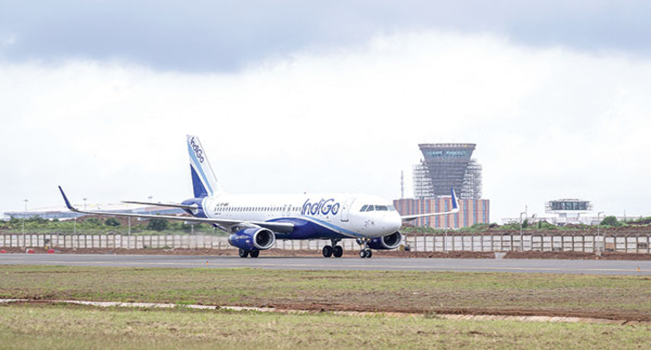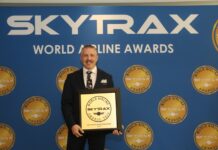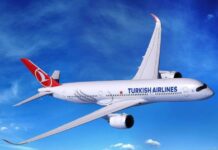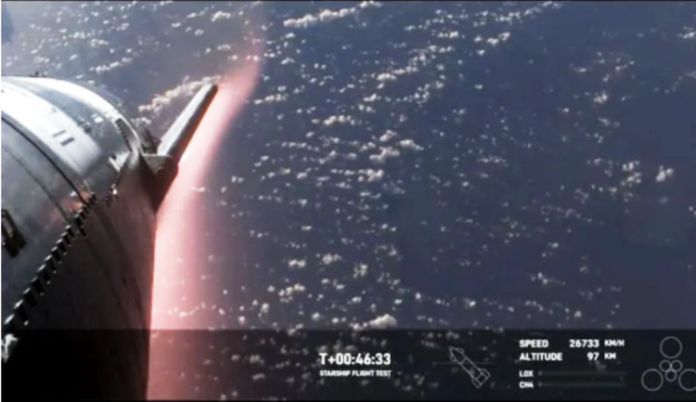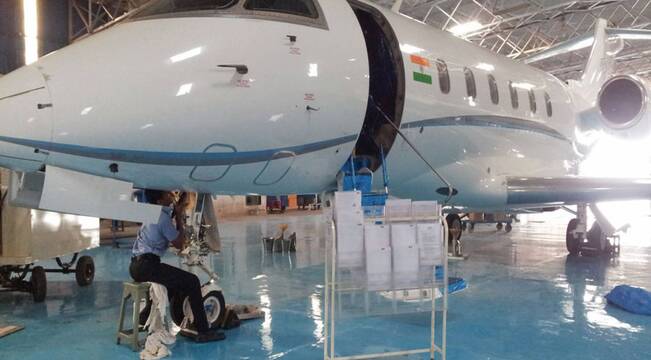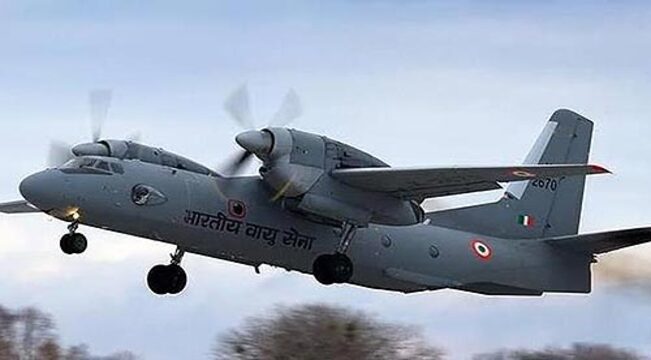SpaceX completed the third integrated flight test of its Starship-Super Heavy space transportation system on March 14, bringing the booster closer to a soft splashdown in the ocean while the upper stage reached its intended trajectory for the first time in a series of engineering demonstrations.
The 396-ft.-tall rocket lifted off from SpaceX’s Boca Chica Beach, Texas, spaceport at 9:25 a.m. EDT, less than a day after receiving clearance for the integrated flight test 3 (IFT-3) from the FAA.
All 33 of the Super Heavy’s methane-fueled Raptor engines fired, repeating a test objective demonstrated for the first time during IFT-2 on Nov. 18. About 2.5 min. after liftoff, all but three of the Super Heavy engines shut down, while the Starship upper stage lit its six Raptors to successfully repeat a hot-staging separation, also accomplished for the first time during IFT-2.
While Starship headed into its intended trajectory, the Super Heavy flipped and conducted a boostback maneuver to set the stage for a soft splashdown in the Gulf of Mexico. During IFT-2, the booster was destroyed during the boostback burn when an engine lost pressure in its oxidizer turbopump due to filter blockage in the liquid oxygen supply, setting off a cascade of engine shutdowns.
The IFT-3 booster nearly completed its intended return flight, but was unable to conduct a landing burn shortly before splashdown, resulting in a hard impact.
Starship also flew far longer than it did during IFT-2, which failed prior to reaching its intended suborbital trajectory. SpaceX had loaded extra liquid oxygen on the vehicle to simulate payload mass and was venting the propellant when a leak occurred, sparking explosions and fires. That vehicle broke apart about 7 min. after liftoff at an altitude of about 93 mi. “Ironically, if it had a payload, it would have reached orbit,” SpaceX CEO and CTO Elon Musk told employees on Jan. 12. “I think we’ve got a really good shot of reaching orbit on flight 3.”
SpaceX targeted a steeper trajectory for IFT-3 which, like IFT-2, was not expected to go into orbit. A planned 65-min. flight was to end with a splashdown in the Indian Ocean, rather than the Pacific Ocean return targeted for IFT-2.
During IFT-3, Starship completed a full-duration ascent burn and was able to run through a series of engineering demonstrations as it coasted 93-146 mi. above Earth. The tests included opening its dispenser-like payload door near the top of the vehicle. SpaceX plans to deploy its next-generation Starlink satellites from Starships through the door.
SpaceX also said it had conducted a test to transfer propellant from Starship’s main tank into a header tank—technology needed for NASA’s planned Artemis Moon landing missions. SpaceX is developing a Starship variant that will need to be fueled in orbit prior to transferring astronauts to and from lunar orbit and the surface of the Moon. IFT-3 propellant transfer demonstration was commissioned by NASA under a separate $53 million contract.
One objective SpaceX was unable to complete was a relight of a Starship Raptor engine in space. The company did not immediately say why that demonstration was not attempted. Starship’s flight test came to an earlier-than-expected end when communications were lost about an hour after launch. SpaceX did not immediately provide details about when and how the vehicle was lost.
Prior to Starship’s demise, SpaceX used its Starlink satellite service to relay views of the vehicle’s re-entry, another key goal of the IFT-3 mission. “This is the fastest and furthest that Starship has ever flown so this is the first time we’re getting to collect this data and understand how its 18,000 hexagonal heat-shield tiles are working together to protect the belly of Starship as it re-enters the Earth’s atmosphere,” said mission commentator Kate Tice, SpaceX’s senior manager for quality systems engineering according to the reports published in aviationweek.com .
Musk said SpaceX is aiming for five more Starship-Super Heavy flights this year.










